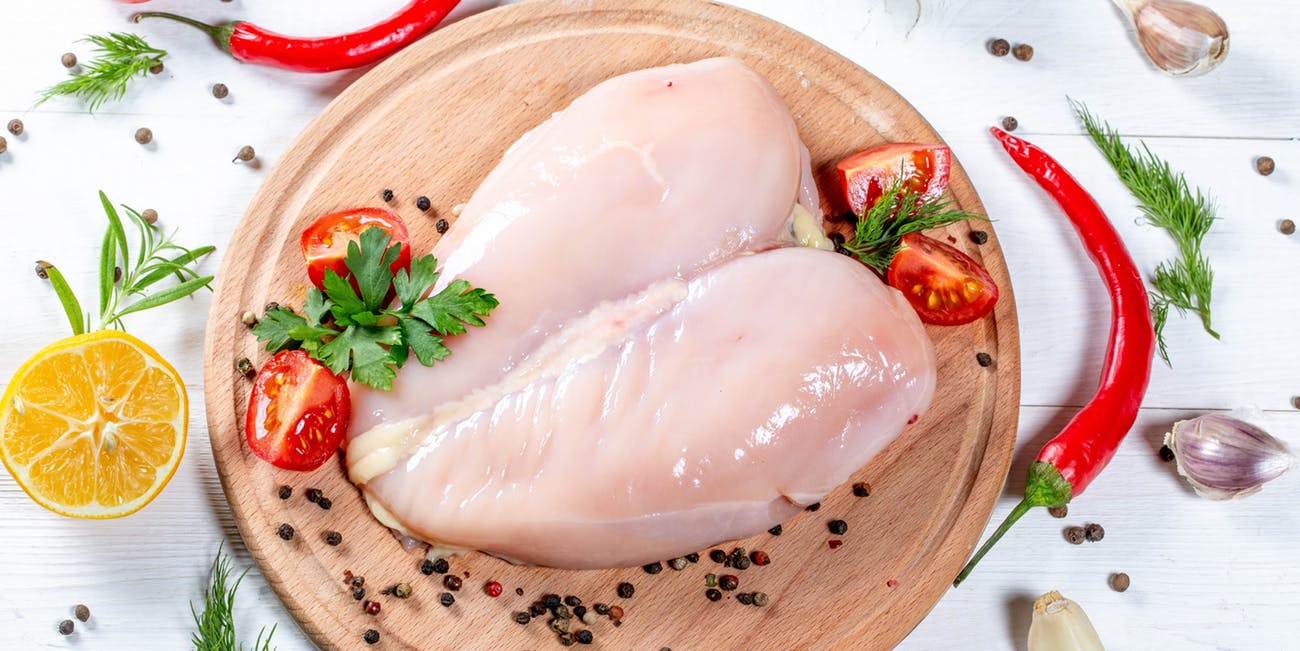Here’s proof that washing raw chicken can splatter unwanted bacteria around your kitchen.
It’s the gooey bits on raw chicken that compel Rita Ross to rinse it off in her kitchen sink before cooking it.
“There’s this little film between the skin and meat that I don’t like. It’s kind of like slime,” Ross, 63, of Raleigh, North Carolina, said. “I just feel like washing it makes it cleaner.”
The problem with rinsing raw chicken, however, is that instead of making it “cleaner,” it splatters potentially harmful bacteria onto kitchen counters and even other food that’s already been properly washed and ready to eat.
That’s according to research published Tuesday by the Department of Agriculture.
“A lot of people prepare their salads around the sink, so it’s cross-contaminated,” said Mindy Brashears, deputy undersecretary for food safety at the USDA.
The USDA partnered with North Carolina State University to investigate how home cooks handle raw meat, and how those practices affect nearby food.
The researchers recruited 300 people to prepare chicken and a salad in test kitchens at N.C. State. Some participants were shown food safety messages on social media ahead of time that discouraged rinsing raw chicken. Most of those participants followed the advice.
But among the control group — those who did not get the safety messages — 61 percent rinsed their raw meat. And nearly 30 percent of those participants’ salads were later found to be contaminated with bacteria from the chicken.
“How many times have you been peeling a vegetable and drop it into the sink, and you just pick it up and go on,” Brashears said. “At that point, you’ve contaminated your vegetables.”
Microbiological horror stories
Some of the participants “washed” their chicken by soaking it in the sink, either with water only, or adding soap, vinegar or lemon juice.
“These are horror stories from a microbiological standpoint,” said Ben Chapman, a food safety specialist and professor at N.C. State. Chapman said there’s no good evidence that soaking raw chicken in vinegar or lemon juice kills bacteria.
“What surprised me most was just how much food preparation happens in and around a sink after someone washes chicken,” he said. Often participants rinsed lettuce in a colander in the sink where they’d just had raw chicken.
Contaminated water from the basin then splashes onto the lettuce. “We in the food safety community didn’t really have a good sense of this until the work we did here,” said Chapman.
No one ate the food prepared in the studies. Investigators went into the test kitchens after the meals were prepared, swabbing the sinks and counters, finding them contaminated even after participants cleaned them.
The CDC estimates that 48 million people — one in six — get sick from a foodborne illness each year.
Salmonella is the kind of bacteria most people associate with raw poultry, and leads to about a million illnesses in the U.S. annually, according to the CDC. Most have diarrhea, a fever and stomach cramps, and most recover, but nearly 400 die each year from salmonella.
Another type of bacteria, campylobacter, is also found on raw or under-cooked poultry, and accounts for about 1.3 million illnesses every year.
Even food safety experts are at risk. “I had campylobacter about a decade ago,” Chapman said. “I won’t go into details, but it was not fun whatsoever.”
“I always saw my mom and dad do it”
The chicken-washing phenomenon is nothing new. Indeed, it’s been happening in kitchens for decades.
“Growing up, I always saw my mom and dad do it,” said Ashley Williams, 23, a grad student at N.C. State.
The USDA and N.C. State recreated the study to illustrate their findings. Both Williams and Ross were participants, and both rinsed their raw chicken.
Rita Ross rinses raw chicken in the sink to remove “slime” because that’s how her mother used to do it. Food safety experts say the practice increases the risk for foodborne illness. “I’ve just always done it this way,” Ross said. “That’s what people around me did when I was growing up. I picked it up from the culture.”
And it’s likely those decades of chicken-washing caused illnesses that went unreported.
“You’ve probably gotten sick from food and just don’t know it,” Brashears said. “People say, ‘Oh, I had a 24-hour flu’ and never went to the doctor.”
Children, the elderly and people with compromised immune systems are most at risk for foodborne illness. Food safety experts say it’s critical to re-educate the next generation, and get kids into the kitchen to teach them not only how to cook, but how to do it safely.
“Just because your mom did it doesn’t mean you have to do it,” said Brashears. “You can be the one who causes change and stops the cycle of foodborne illness.”
Other ways to reduce the risk of cross-contamination include:
washing hands thoroughly for 20 seconds with soap and water, drying hands with a paper towel, then throwing the paper towel away
sanitizing the sink and kitchen counters before and after food preparation
using a meat thermometer to make sure chicken reaches 165 degrees
using separate cutting boards and utensils for raw meat and other food.

COMMENTS